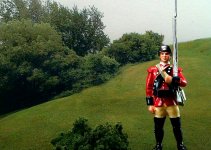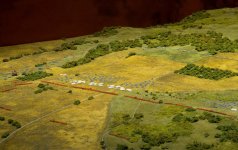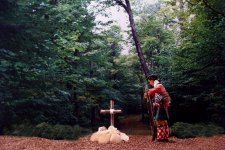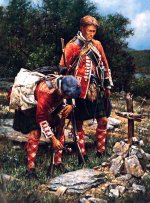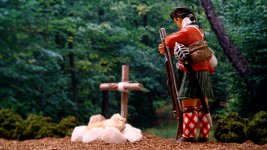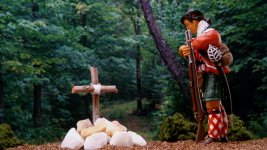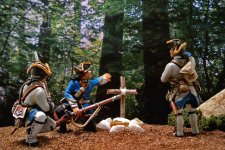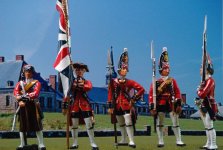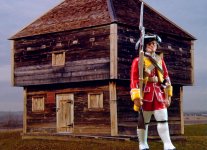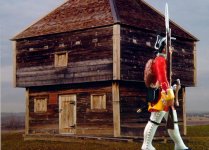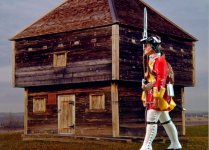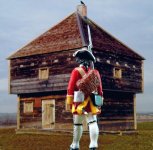PolarBear
Major
- Joined
- Feb 24, 2007
- Messages
- 6,706
"A Royal American on the Plains of Abraham" 1759
Hans Guberman, a Private in the Provincial 60th Royal American Regiment of Foot (Light Infantry) keeps watch over the Plains of Abraham where several weeks before the armies of Wolfe and Montcalm clashed during the Siege of Quebec. Guberman was one of a number of immigrants recruited
for the Regiment from German colonists living in North America. (Note the background is a photograph of the actual Plains of Abraham which today is preserved as a Canadian park) Figure is Britains#43120 from the Classics French & Indian War series. Also included below is a scale model of how the Plains appeared at the time of the battle.
Randy 1/31/08
Hans Guberman, a Private in the Provincial 60th Royal American Regiment of Foot (Light Infantry) keeps watch over the Plains of Abraham where several weeks before the armies of Wolfe and Montcalm clashed during the Siege of Quebec. Guberman was one of a number of immigrants recruited
for the Regiment from German colonists living in North America. (Note the background is a photograph of the actual Plains of Abraham which today is preserved as a Canadian park) Figure is Britains#43120 from the Classics French & Indian War series. Also included below is a scale model of how the Plains appeared at the time of the battle.
Randy 1/31/08


